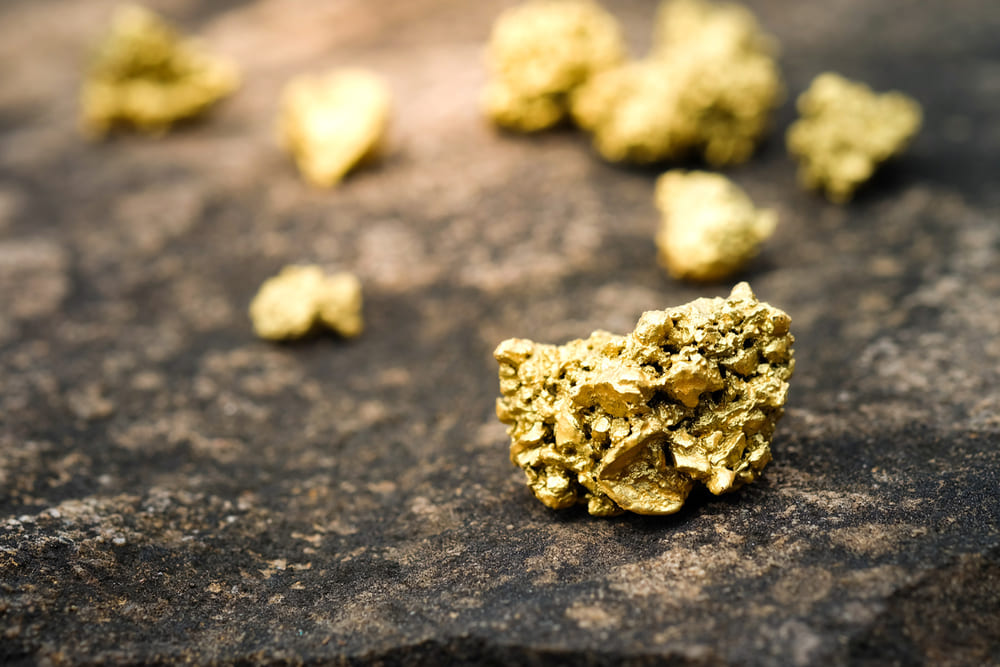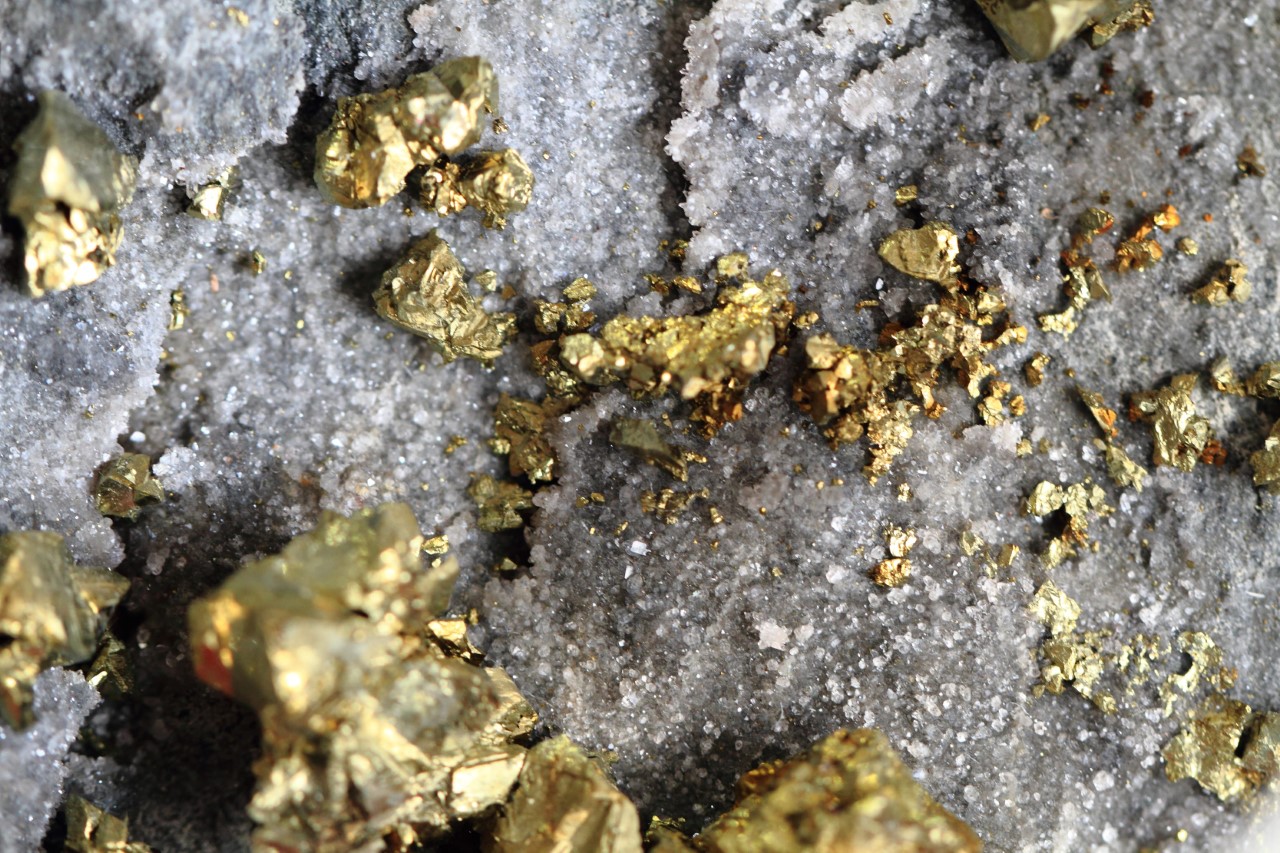The history of gold: from the mine to the jewelry workshop

What is gold?
Gold is an atom, a mineral in particular.
It is classified in the table of Mendeleïev which lists all the metals known on the earth: gold is classified 79 under the denomination Au.
Its melting point temperature is 1064 degrees while that of platinum is 1768 degrees.
Moreover, gold is very dense. Its density index is 19.3.
Gold crystallizes in octahedron, like diamond.

The cubic structure of gold

The color of gold
Gold absorbs the yellow-red part of the spectrum. If we look through a very thin sheet of gold, the yellow-red colors will be absorbed by the gold atoms and we will see this blue-green gold sheet.
So why does the human eye see yellow gold? The eye is not sensitive to red in relation to yellow, which is why we see yellow gold.
The properties of gold
Gold is stable
It does not tarnish, does not react to oxygen, water or certain acids. It is stable over time. However, it can be degraded by a mixture of sulfuric acid and dissolved by certain cyanides or very abrasive compositions.
Gold is ductile
Gold is very strong, it does not bend in the hand.
It can be stretched without breaking. For example, one gram of gold can be stretched over 2 km.
Gold is malleable
It takes the shape you want to give it. However, it can be scratched. The malleability of gold is such that in jewelry we do not use pure gold, but alloys.
The creation of gold
According to the first theory, gold is born from supernovas. It is known that supernovas produce chemical elements, but it is not known exactly how gold is created. This is a question that scientists are still researching today. Over millions of years, this fusion process transforms the hydrogen molecules found in the core of supernovas into the heavier chemical elements helium, carbon and oxygen. When they burn, these elements are transformed into metals: iron and nickel. Then, the pressure of the core decreases, the star collapses on itself while generating a very high energy and explodes into a supernova. The pressure is so high that protons and subatomic electrons combine to create neutrons. Absorbed by the ferrous elements, they give birth to heavier metals such as lead, uranium, silver, gold... Unlike the transformation of hydrogen into helium which takes millions of years, a few seconds are enough to create these heavy metals within the supernova.
Some Harvard scientists such as Edo Berger have another theory: gold would come from the fusion of two neutron stars, a rare and powerful cosmic cataclysm, dating back billions of years. This would trigger nuclear reactions inside the neutron cloud allowing the instant formation of gold and other heavy metals.

Where do you find gold?
Most of the time gold is found in association with another mineral. It is often in grains and therefore too small to be seen with the naked eye.
Concentrations of gold atoms are found in pyrites.
It is also found in quartz since gold crystallizes between the quartz grains.


The main producers of gold

Gold mining
The exploitation of gold is done in depth, that is to say in underground tunnels to recover the maximum of rocks that have gold, or in the open air.
In order to recover gold, at the time the secondary deposit was used: the gold was recovered in the form of small flakes, mercury was put into them, which formed a paste, the mercury was heated and the gold could be recovered. The problem with this technique is that mercury is not biodegradable and is dangerous to health.
That is why today, cyanidation is used. This is a more controlled procedure that allows the recovery of at least 90% of the gold contained in the rock. Even the finest particles are recovered with this process. The rock is left to settle with the gold in cyanide, which is a solvent for the gold.
There are also other separation processes that use the density of the gold, and the flotation process for example, which consists of foaming water so that the gold remains suspended in the air. However, the flotation process uses a lot of water.
The recycling of gold is increasingly used to preserve the planet. Indeed, about 1100 tons of gold at gold buyers/sellers is recycled gold: 1/3 of the gold used in the world comes from recycling.

Composition of the gold alloy


Gold plating

Other uses of gold
- Cell phones
- Gold electronic circuits
- Face mask
- Dental prosthesis
Diamond Guides
What diamond criteria to favour ?
What quality criteria for your preferred diamond? i-diamond gives you advice about which quality criterion for the…
Diamond Certificates (GIA, IGI, HRD)
Essential information about certified diamonds and recognised diamond certificates by professional diamantaires…
Diamond Carat
Find the information you need for understanding carat of a diamond. Professional diamond manufacturer providing…
Jewellery Guides
Jewellery in gold or platinium ?
Jewelry in white gold, yellow gold or platinum jewelry? i-Diamond, a specialist in white gold jewelry, 18k yellow and…
Standard or hand made jewellery ?
Handmade jewelry or industrial? i-diamants specialist handmade jewelry and customized according to the proportions of…
Classic or customized jewellery ?
Classic and custom jewelry? i-diamond jewelry specialist classic and tailored according to the proportions of the…
F.A.Q.
Comment choisir un diamant dans notre catalogue de prix ?
La qualité d’un diamant est déterminée par 4 critères principaux que l’on…
Comment nos sélections vous aident à choisir votre diamant ?
Diamantaires depuis 1888, nous sélectionnons les plus beaux diamants naturels. Pour vous aider à choisir…
Comment choisir la pureté de votre diamant ?
L’importance du critère de pureté augmente de pair avec le poids du diamant. En effet, s’il…
De Hantsetters, diamonteers since 1888
Customer service at your service, provided by diamond dealers
All our diamonds are independently certified by 3 world-renowed organisations



Want to talk to a diamonteer ?
Contact us now